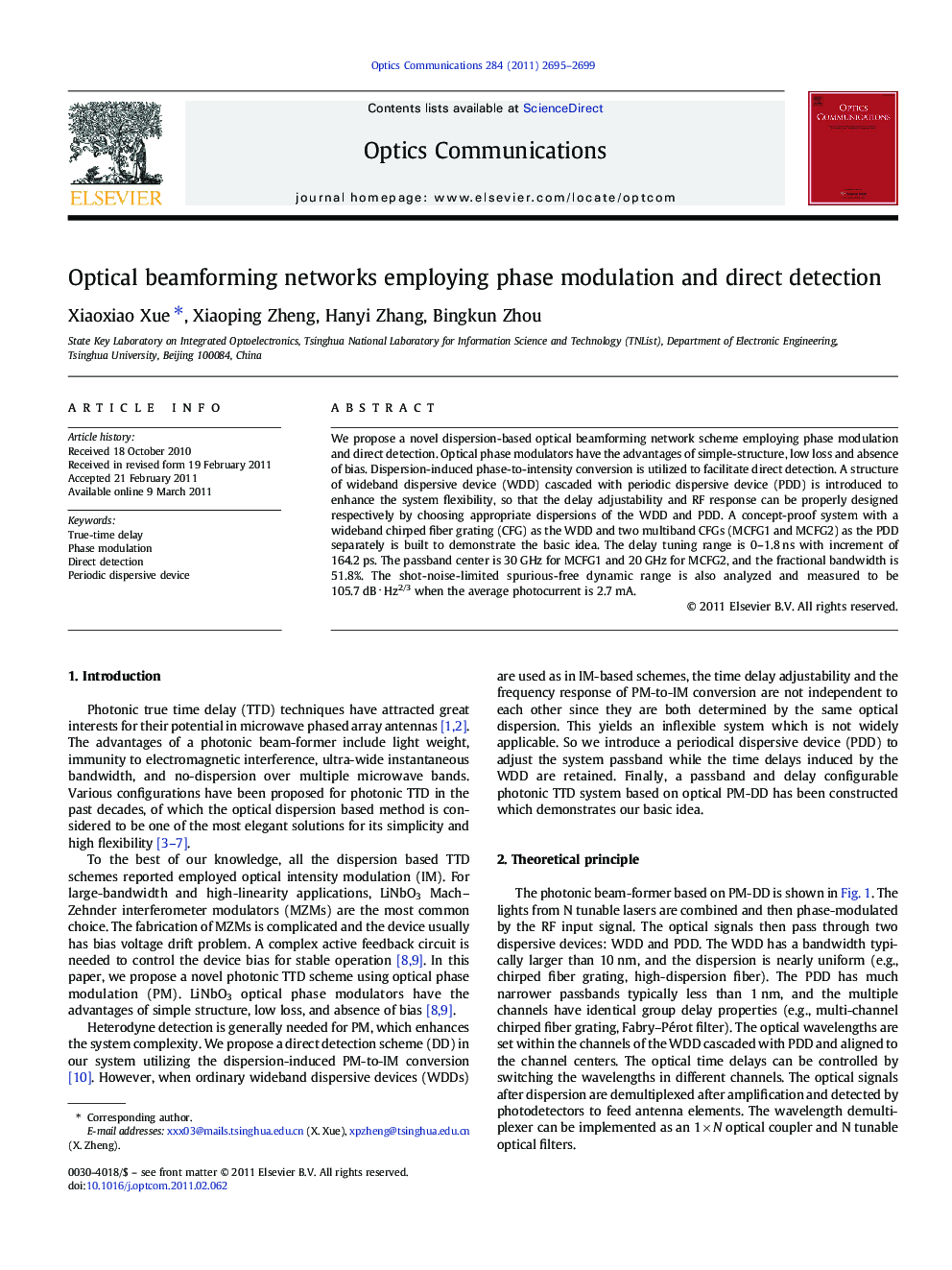| Article ID | Journal | Published Year | Pages | File Type |
|---|---|---|---|---|
| 1537425 | Optics Communications | 2011 | 5 Pages |
We propose a novel dispersion-based optical beamforming network scheme employing phase modulation and direct detection. Optical phase modulators have the advantages of simple-structure, low loss and absence of bias. Dispersion-induced phase-to-intensity conversion is utilized to facilitate direct detection. A structure of wideband dispersive device (WDD) cascaded with periodic dispersive device (PDD) is introduced to enhance the system flexibility, so that the delay adjustability and RF response can be properly designed respectively by choosing appropriate dispersions of the WDD and PDD. A concept-proof system with a wideband chirped fiber grating (CFG) as the WDD and two multiband CFGs (MCFG1 and MCFG2) as the PDD separately is built to demonstrate the basic idea. The delay tuning range is 0–1.8 ns with increment of 164.2 ps. The passband center is 30 GHz for MCFG1 and 20 GHz for MCFG2, and the fractional bandwidth is 51.8%. The shot-noise-limited spurious-free dynamic range is also analyzed and measured to be 105.7 dB ⋅ Hz2/3 when the average photocurrent is 2.7 mA.
Graphical abstractFigure optionsDownload full-size imageDownload high-quality image (129 K)Download as PowerPoint slideResearch highlights►Relative delays occur due to the wideband dispersive device. ►Optical phase variation is converted to intensity due to dispersion. ►System frequency response is adjusted by the periodic dispersive device.
